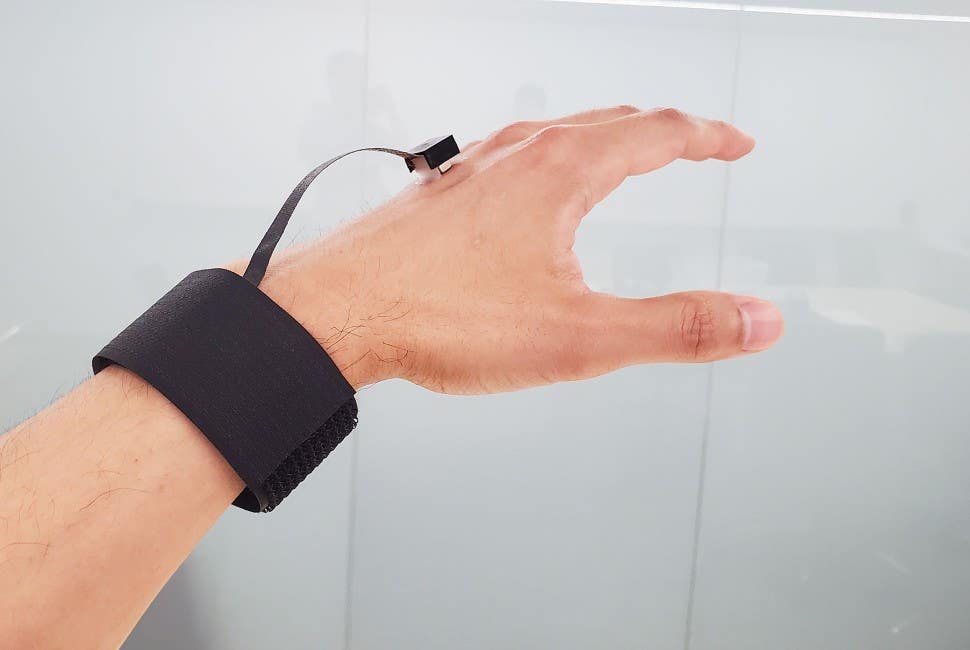Groundbreaking New Test Detects Who May Be at Risk of Alzheimer’s Disease
Mass General Brigham, a premier healthcare system, has unearthed a remarkable revelation regarding the early detection of Alzheimer’s.

[June 18, 2023: Staff Writer, The Brighter Side of News]
Mass General Brigham, a premier healthcare system, has unearthed a remarkable revelation regarding the early detection of Alzheimer's disease. (CREDIT: Creative Commons)
A cutting-edge study conducted by researchers from Mass General Brigham, a premier healthcare system, has unearthed a remarkable revelation regarding the early detection of Alzheimer's disease.
The study posits that the seemingly mundane task of navigating a phone menu holds the potential to unveil the earliest signs of deteriorating daily function associated with impending Alzheimer's disease. This simulated task, encapsulating the challenges faced in routine life, has now emerged as a potential tool to arrest the progress of Alzheimer's disease even before conspicuous signs of cognitive decline materialize. These groundbreaking findings have been published in the respected Journal of Alzheimer’s Disease.
The game-changing study has heralded the use of an unconventional method to diagnose the latent markers of Alzheimer's disease. It found that the task performance of older adults, which takes mere minutes to evaluate, could signal the presence of the sinister precursors of Alzheimer's disease: brain deposits of amyloid and tau proteins. With this promising premise, the research holds the promise of accelerating prevention trials in pursuit of effective treatments for this debilitating disease.
Dr. Gad Marshall, M.D., a renowned neurologist and the Director of Clinical Trials at the Center for Alzheimer Research and Treatment at Brigham and Women’s Hospital (a proud constituent of the Mass General Brigham healthcare system), holds a principal role in this pioneering research. Dr. Marshall, as the senior author of the paper, emphasized the novelty and efficacy of the test.
Related Stories
He stated, “This test is a more objective assessment of an aspect of daily functioning as opposed to our typical way of using a questionnaire filled out by somebody who knows the individual well. The implication is we may in fact detect a clinically meaningful change much earlier than we anticipate.”
In a paradigm shift from conventional research methodologies, Dr. Marshall and his team employed the Harvard Automated Phone Task (APT) for the study. Developed and validated by the Center for Alzheimer Research and Treatment at Brigham and MGH, this unique test recreates three tasks typically encountered by an older individual while navigating a phone menu. The tasks mirror real-life situations such as refilling a prescription, selecting a new primary care physician via a call to a health insurance company, and executing a banking transaction.
The research participants, along with a study partner who is familiar with their behavior, were asked to navigate an interactive voice response system to complete these tasks. These participants were also subject to a series of other assessments related to various everyday activities, cognitive testing, and brain scans to reveal amyloid and tau deposits in different regions of the brain.
The objective of this exploratory study was to examine the cross-sectional relationship between a performance-based IADL test, the Harvard Automated Phone Task (APT), and cerebral tau and amyloid burden in cognitively normal (CN) older adults. (CREDIT: Alzheimer’s Disease)
One crucial observation in the study was that nearly a third of the participants, all of whom were clinically normal and displayed no signs of cognitive impairment, struggled with the more challenging tasks in the daily functioning assessment. They showed elevated levels of amyloid and tau deposits in the brain. This particular finding assumes significance as most Alzheimer's patients initially struggle with short-term memory, word-finding difficulties, and a skewed sense of direction, along with issues like decreased motivation, depression, irritability, and anxiety.
The authors of the study highlighted certain limitations, recognizing that the assessment only represents a fraction of daily functioning that not everyone may utilize. Further, there was a notable lack of diversity among the participants, with 86 percent being white and 97 percent non-Hispanic. Thus, the authors emphasized the need for further studies to replicate these findings in a more representative study population and to see if associations with difficulty completing simpler tasks emerge over a longer duration.
However, the study boasts of its strength in the ability of participants to perform the tasks independently, even outside a clinical setting. The authors affirm that the sensitive assessment of daily functioning, such as the APT, could potentially identify Alzheimer's disease well before a patient shows pronounced cognitive changes.
Chris Gonzalez, M.S., a primary author of the study and a former research assistant in the Department of Neurology at Brigham, resonated with this conclusion. Currently a fourth-year PhD student in clinical neuropsychology at Rosalind Franklin University of Medicine and Science, Gonzalez stated:
"Although these findings are preliminary, they signal that there is an association between an objective measurement of instrumental activities of daily living (i.e., the Harvard APT task) and the interaction of tau and amyloid in a sample of cognitively normal older adults. Having a task like the Harvard APT could better capture an individual's overall ability to complete complex everyday tasks rather than the questionnaires that are given to patients and their informants to better understand the preclinical stages of Alzheimer's disease.”
Who has Alzheimer’s Disease?
In 2020, as many as 5.8 million Americans were living with Alzheimer’s disease.
Younger people may get Alzheimer’s disease, but it is less common.
The number of people living with the disease doubles every 5 years beyond age 65.
This number is projected to nearly triple to 14 million people by 2060.
Symptoms of the disease can first appear after age 60, and the risk increases with age.
What is known about Alzheimer’s Disease?
Scientists do not yet fully understand what causes Alzheimer’s disease. There likely is not a single cause but rather several factors that can affect each person differently.
Age is the best known risk factor for Alzheimer’s disease.
Family history—researchers believe that genetics may play a role in developing Alzheimer’s disease. However, genes do not equal destiny. A healthy lifestyle may help reduce your risk of developing Alzheimer’s disease. Two large, long term studies indicate that adequate physical activity, a nutritious diet, limited alcohol consumption, and not smoking may help people.
Changes in the brain can begin years before the first symptoms appear.
Researchers are studying whether education, diet, and environment play a role in developing Alzheimer’s disease.
There is growing scientific evidence that healthy behaviors, which have been shown to prevent cancer, diabetes, and heart disease, may also reduce risk for subjective cognitive decline.
What is the burden of Alzheimer’s disease in the United States?
Alzheimer’s disease is one of the top 10 leading causes of death in the United States.
The 6th leading cause of death among US adults.
The 5th leading cause of death among adults aged 65 years or older.
In 2020, an estimated 5.8 million Americans aged 65 years or older had Alzheimer’s disease. This number is projected to nearly triple to 14 million people by 2060.
In 2010, the costs of treating Alzheimer’s disease were projected to fall between $159 and $215 billion. By 2040, these costs are projected to jump to between $379 and more than $500 billion annually.
Death rates for Alzheimer’s disease are increasing, unlike heart disease and cancer death rates that are on the decline.
Dementia, including Alzheimer’s disease, has been shown to be under-reported in death certificates and therefore the proportion of older people who die from Alzheimer’s may be considerably higher.
Note: Materials provided above by The Brighter Side of News. Content may be edited for style and length.
Like these kind of feel good stories? Get the Brighter Side of News' newsletter.
Joseph Shavit
Head Science News Writer | Communicating Innovation & Discovery
Based in Los Angeles, Joseph Shavit is an accomplished science journalist, head science news writer and co-founder at The Brighter Side of News, where he translates cutting-edge discoveries into compelling stories for a broad audience. With a strong background spanning science, business, product management, media leadership, and entrepreneurship, Joseph brings a unique perspective to science communication. His expertise allows him to uncover the intersection of technological advancements and market potential, shedding light on how groundbreaking research evolves into transformative products and industries.



